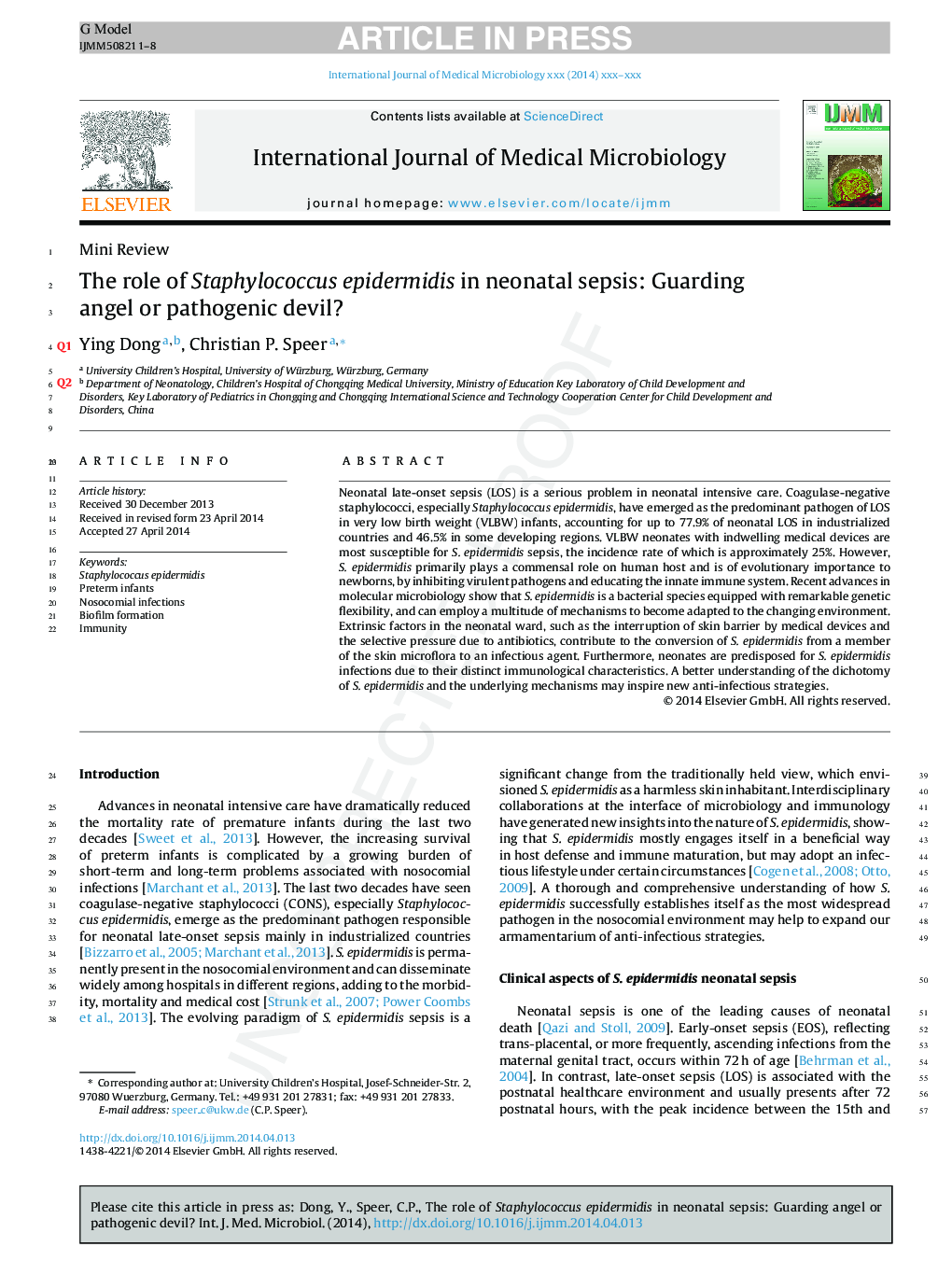| Article ID | Journal | Published Year | Pages | File Type |
|---|---|---|---|---|
| 8385511 | International Journal of Medical Microbiology | 2014 | 8 Pages |
Abstract
Neonatal late-onset sepsis (LOS) is a serious problem in neonatal intensive care. Coagulase-negative staphylococci, especially Staphylococcus epidermidis, have emerged as the predominant pathogen of LOS in very low birth weight (VLBW) infants, accounting for up to 77.9% of neonatal LOS in industrialized countries and 46.5% in some developing regions. VLBW neonates with indwelling medical devices are most susceptible for S. epidermidis sepsis, the incidence rate of which is approximately 25%. However, S. epidermidis primarily plays a commensal role on human host and is of evolutionary importance to newborns, by inhibiting virulent pathogens and educating the innate immune system. Recent advances in molecular microbiology show that S. epidermidis is a bacterial species equipped with remarkable genetic flexibility, and can employ a multitude of mechanisms to become adapted to the changing environment. Extrinsic factors in the neonatal ward, such as the interruption of skin barrier by medical devices and the selective pressure due to antibiotics, contribute to the conversion of S. epidermidis from a member of the skin microflora to an infectious agent. Furthermore, neonates are predisposed for S. epidermidis infections due to their distinct immunological characteristics. A better understanding of the dichotomy of S. epidermidis and the underlying mechanisms may inspire new anti-infectious strategies.
Related Topics
Life Sciences
Biochemistry, Genetics and Molecular Biology
Biochemistry, Genetics and Molecular Biology (General)
Authors
Ying Dong, Christian P. Speer,
